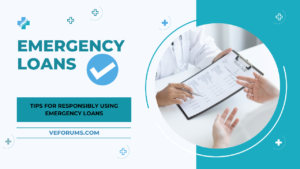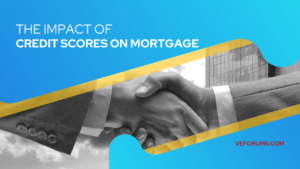Navigating the Landscape of Homeownership: A Comprehensive Exploration of Private Mortgage Insurance (PMI)

Private mortgage insurance
The dream of homeownership is a significant milestone for many, representing a tangible achievement of stability and financial success. But for would-be homeowners, the road to property ownership is sometimes fraught with complicated financial requirements that might be intimidating. A key element affecting a mortgage’s affordability and the total cost of homeownership among these complications is Private Mortgage Insurance (PMI). We will take a close look at PMI in this long guide, exploring its causes, mechanisms, benefits, and drawbacks as well as a wide range of techniques that homeowners may use to control or get rid of it.
Understanding Private Mortgage Insurance (PMI)
The Genesis of PMI
Private Mortgage Insurance emerged as a response to the evolving landscape of the mortgage industry. Traditionally, a down payment of 20% was considered the gold standard, ensuring that borrowers had a substantial stake in their homes and minimizing the risk for lenders. However, this criterion posed a significant barrier for many prospective homebuyers who lacked the means to assemble such a substantial upfront payment.
To tackle this problem and encourage diversity in the real estate industry, PMI was presented as a way to reduce risk. It gives lenders a safety net in case of borrower default, enabling borrowers to get a mortgage with a down payment of less than 20%. While PMI facilitates broader access to homeownership, it introduces an additional cost for borrowers.
How PMI Works
A borrower’s credit score, the loan amount, and the loan size are some of the variables that might impact the cost of PMI. The annual PMI payment typically falls between 0.3% and 1.5% of the loan amount.
You have alternatives when it comes to paying for these premiums. This nuanced interplay of risk mitigation and financial flexibility positions PMI as a dynamic element in the homeownership equation.
Pros and Cons of Private Mortgage Insurance
Pros
| Pros of PMI | Explanation |
|---|---|
| Increased Access to Homeownership | Enables individuals with limited funds for a down payment to qualify for a mortgage, widening the pool of potential homebuyers. |
| Accelerates Homeownership Timeline | Allows borrowers to enter the housing market sooner than if they were required to save a large sum for a 20% down payment, capitalizing on favorable conditions and building equity faster. |
| Flexible Payment Options | Offers flexibility in how the premiums are paid, allowing borrowers to choose between monthly premiums, an upfront lump sum, or a combination of both. |
| Tax Deductibility | In certain situations, PMI premiums may be tax-deductible, providing a potential financial benefit for homeowners. |
Cons
| Cons of PMI | Explanation |
|---|---|
| Additional Cost | Adds extra expense to the monthly mortgage payment, requiring borrowers to carefully weigh the benefits against the increased overall cost of homeownership due to PMI. |
| No Direct Benefit to the Borrower | Unlike homeowner’s insurance, PMI exclusively benefits the lender, lacking direct advantages for the borrower, which some may find disadvantageous considering the additional financial burden. |
| Cancellation Process | The process of removing PMI can be bureaucratic, requiring borrowers to actively monitor their equity and initiate necessary steps for cancellation, adding an extra layer of complexity to homeownership. |
Down Payment Percentage and Taxes
| Down Payment Percentage | Tax Implications |
|---|---|
| Less than 20% | PMI premiums may be tax-deductible in certain cases. |
| 20% or more | No PMI is required, potentially reducing tax benefits. |
Understanding these pros and cons is crucial for homeowners to make informed decisions about whether PMI aligns with their financial goals and circumstances.
Strategies for Managing or Eliminating PMI
Make a Larger Down Payment
The most straightforward method to avoid PMI is to make a down payment of at least 20% of the home’s purchase price. While this necessitates more substantial initial savings, it eliminates the need for PMI and establishes a solid equity foundation from the outset.
Refinance Your Mortgage
For homeowners whose property values have increased, leading to an increase in equity, refinancing the mortgage can be an effective strategy. By securing a new loan based on the current value of the home, borrowers may no longer require PMI. This option is particularly attractive when interest rates are favourable, as it allows homeowners to optimize their mortgage terms.
Regularly Monitor Home Value
Keeping a close eye on the real estate market and the value of your home is crucial. If property values appreciate, it contributes to reaching the 20% equity threshold sooner, allowing homeowners to request the removal of PMI. Homeowners can leverage online tools, real estate professionals, and local market trends to stay informed about the potential for increased property values.
Make Additional Mortgage Payments
Accelerating the repayment of the mortgage by making extra payments towards the principal is an effective way to expedite the process of reaching 20% equity. This, in turn, facilitates the removal of PMI and reduces the overall interest paid over the life of the loan. Implementing a consistent strategy of making additional payments, even in small increments, can have a compounding effect on equity growth.
Home Improvements
Some homeowners invest in property improvements to increase their value. This approach not only enhances the living space but can also contribute to faster equity accumulation, potentially allowing for the removal of PMI. Renovations, modernization projects, and energy-efficient upgrades not only add aesthetic value but can be strategic investments in the long-term financial health of the property.
Automatic Termination
Familiarize yourself with the rules governing the automatic termination of PMI. In many cases, lenders are required to cancel PMI automatically once the borrower’s equity surpasses 22%. Staying informed about these regulations can help homeowners navigate the process more efficiently. Automatic termination provides a straightforward path to PMI elimination without requiring active involvement from the borrower.
Negotiate with the Lender
Borrowers may have the chance to discuss PMI with their lender in specific circumstances. The lender can be open to reassessing the PMI terms if the borrower’s credit score or financial status has significantly improved. This option requires effective communication and a demonstrated financial improvement on the part of the borrower.
Conclusion
Private Mortgage Insurance is a multifaceted aspect of the home-buying process, playing a pivotal role in facilitating homeownership for those with limited upfront funds. While PMI provides a gateway to the real estate market, borrowers must be cognizant of its costs and the strategies available for managing or eliminating it. Making informed decisions about PMI can contribute to a more financially prudent and rewarding homeownership experience.
As with any significant financial decision, consulting with a mortgage professional is crucial. Mortgage professionals possess a deep understanding of the mortgage landscape, including the intricacies of PMI. They can provide personalized advice based on individual circumstances, helping borrowers navigate the complexities of PMI and make choices aligned with their long-term financial goals. These professionals can also assist in assessing various mortgage products and terms, guiding borrowers toward options that minimize the impact of PMI on their financial well-being.
Furthermore, the journey of homeownership extends beyond the initial purchase, and periodic reassessment of financial strategies is essential. As market conditions fluctuate and personal financial situations evolve, homeowners should consider revisiting their approach to PMI management. Regular financial check-ups with mortgage professionals can ensure that homeowners are making the most informed decisions at every stage of their homeownership journey.
Understanding and strategically managing PMI is an integral part of the journey toward homeownership. It gives people the power to decide in ways that support their long-term objectives and financial well-being. The landscape of PMI is ever-changing, and homeowners may employ various tactics to lessen its effects or completely eradicate it. Through diligent planning and informed choices, prospective and current homeowners can navigate the complex terrain of PMI, ultimately achieving the dream of sustainable and financially sound homeownership.




CzUOfPahg